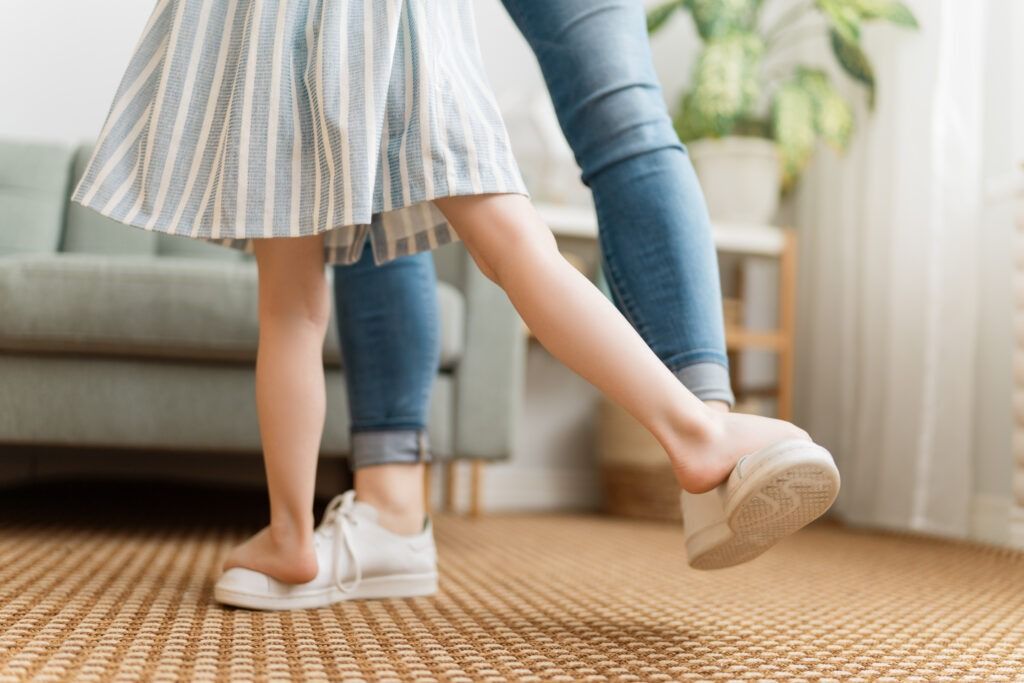Complete Care for Foot and Ankle Injuries
Orthopedic Associates of Dutchess County leads the way in treating foot and ankle injuries that can sideline you from life. From sprains and fractures to arthritis, Achilles tendon, and toe pain, we treat the full spectrum of foot and ankle conditions.
Our foot and ankle surgeons offer nonsurgical and surgical care for athletes and people of all ages. Don’t settle for experiencing pain with every step. We’ll diagnose the problem and develop a treatment plan that helps you get back to your daily activities.
Why Choose Orthopedic Associates of Dutchess County for Foot and Ankle Injuries?
We’re the premier practice in the area for injuries and conditions that cause foot and ankle pain. We offer:
- Fellowship-trained surgeons: Our foot and ankle surgeons have the highest level of training in both surgical and nonsurgical treatment. Though many people who seek care won’t need surgery, they still benefit from our surgical expertise.
- Surgical and nonsurgical treatment options: We offer custom-molded shoe inserts, cutting-edge therapies and newer, less invasive surgical options that help you heal faster. From anti-inflammatory injections to more complex foot and ankle surgeries, our specialists aim to get you moving again.
- Convenience every step of the way: We do everything we can to help you navigate the treatment and recovery process.
Foot and Ankle Conditions We Treat
Your feet and ankles work hard to meet the demands of daily life and the repetitive stress of exercise. Unfortunately, they’re vulnerable to injury. Our foot and ankle surgeons most commonly treat:
- Achilles tendon injuries
- Adult acquired flatfoot
- Ankle arthritis
- Ankle pain, including overuse, tendinitis, and impingement.
- Arthritis in toes and feet, including hallux rigidus and gout.
- Bunions
- Calcaneus (heel bone) fractures
- Charcot-marie-tooth disease
- Claw toe
- Compartment syndrome
- Flatfoot
- Foot deformities
- Fractures and sprains, including stress fractures.
- Hammer toe
- Heel pain, including plantar fasciitis.
- Lisfranc (midfoot) injury
- Morton’s neuroma and other foot pain.
- Plantar fasciitis and bone spurs
- Posterior tibial tendon dysfunction
- Sesamoiditis
- Sever’s disease
- Stiff big toe (hallux rigidus)
- Tarsal coalition
- Tendinitis in feet and ankles.
- Toe pain, including hammer toe and mallet toe.
- Turf toe
Treatments for Foot and Ankle Injuries
When we can, we start with conservative treatments, such as:
- Medication to reduce pain, inflammation, or swelling.
- Injections that relieve pain, such as epidural steroid injections.
- Custom-molded shoe inserts that offer personalized support and comfort.
Foot and Ankle Surgeries We Perform
Some injuries and conditions need more intervention, including surgery. Common procedures include:
- Arthroscopy: Doctors make tiny incisions and use a tool called an arthroscope, which contains a tiny camera, to examine or repair damaged tissue. Surgeons can also use arthroscopy to repair ankle instability, relieve ankle arthritis, and treat a variety of other foot and ankle conditions.
- Foot and ankle surgery: For conditions that affect the structure and shape of the foot, we may shorten, lengthen, or straighten the toe or other bones in the foot. We also correct foot deformities, hammer toe, neuromas, and fracture-related problems such as ankle fracture fixation.
- Tendon and ligament repair surgery: We can repair torn or injured tendons and ligaments with surgery, such as Achilles tendon reconstruction or repair and lateral ligamentous reconstruction. These types of surgeries can relieve pain, improve range of motion, and strengthen the foot and ankle.
Your feet and ankles work hard to meet the demands of daily life and the repetitive stress of exercise. Unfortunately, they’re vulnerable to injury. Our foot and ankle surgeons most commonly treat:
- Achilles tendon injuries
- Adult acquired flatfoot
- Ankle arthritis
- Ankle pain, including overuse, tendinitis, and impingement.
- Arthritis in toes and feet, including hallux rigidus and gout.
- Bunions
- Calcaneus (heel bone) fractures
- Charcot-marie-tooth disease
- Claw toe
- Compartment syndrome
- Flatfoot
- Foot deformities
- Fractures and sprains, including stress fractures.
- Hammer toe
- Heel pain, including plantar fasciitis.
- Lisfranc (midfoot) injury
- Morton’s neuroma and other foot pain.
- Plantar fasciitis and bone spurs
- Posterior tibial tendon dysfunction
- Sesamoiditis
- Sever’s disease
- Stiff big toe (hallux rigidus)
- Tarsal coalition
- Tendinitis in feet and ankles.
- Toe pain, including hammer toe and mallet toe.
- Turf toe
When we can, we start with conservative treatments, such as:
- Medication to reduce pain, inflammation, or swelling.
- Injections that relieve pain, such as epidural steroid injections.
- Custom-molded shoe inserts that offer personalized support and comfort.
Some injuries and conditions need more intervention, including surgery. Common procedures include:
- Arthroscopy: Doctors make tiny incisions and use a tool called an arthroscope, which contains a tiny camera, to examine or repair damaged tissue. Surgeons can also use arthroscopy to repair ankle instability, relieve ankle arthritis, and treat a variety of other foot and ankle conditions.
- Foot and ankle surgery: For conditions that affect the structure and shape of the foot, we may shorten, lengthen, or straighten the toe or other bones in the foot. We also correct foot deformities, hammer toe, neuromas, and fracture-related problems such as ankle fracture fixation.
- Tendon and ligament repair surgery: We can repair torn or injured tendons and ligaments with surgery, such as Achilles tendon reconstruction or repair and lateral ligamentous reconstruction. These types of surgeries can relieve pain, improve range of motion, and strengthen the foot and ankle.
Physicians

- Foot and Ankle
Practicing in:
Poughkeepsie and Hopewell Junction
- Foot and Ankle
Practicing in:
Poughkeepsie, New Windsor, and Kingston
- Foot and Ankle
Practicing in:
Poughkeepsie, Rhinebeck, and Kingston


